Drum Building
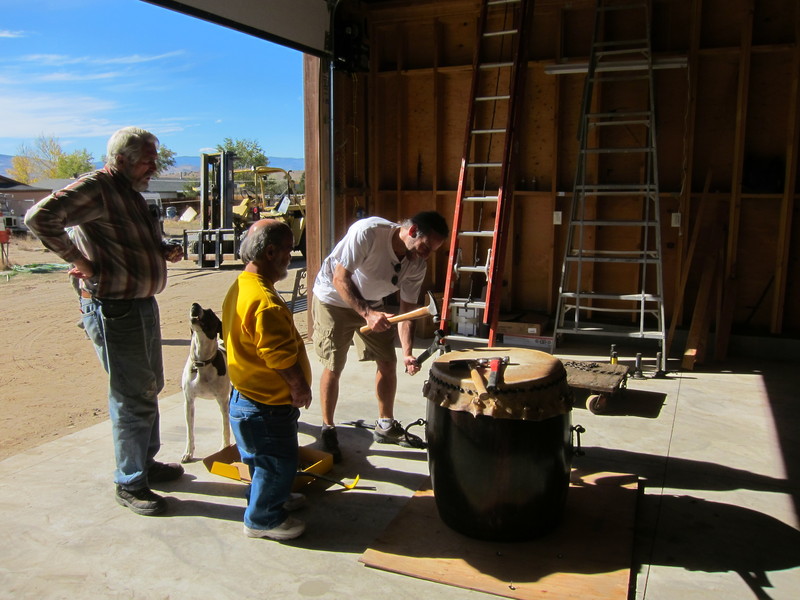 We make our own drums out of wine barrels. Sometimes we need to retune and refinish them to make them look and sound perfect. The first step is to remove the old head. Bob, Ken, Mike, and Sheila demonstrate the process. Using a hammer the tacks are carefully removed so the drum head is not damaged and we can put it back on. We also make sure to save the tacks because they are expensive and we can re-use them later.
We make our own drums out of wine barrels. Sometimes we need to retune and refinish them to make them look and sound perfect. The first step is to remove the old head. Bob, Ken, Mike, and Sheila demonstrate the process. Using a hammer the tacks are carefully removed so the drum head is not damaged and we can put it back on. We also make sure to save the tacks because they are expensive and we can re-use them later.
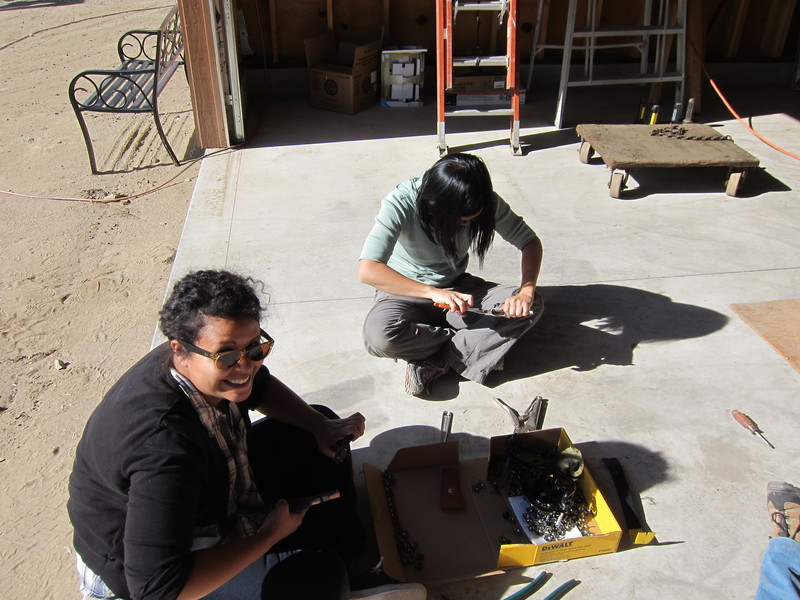
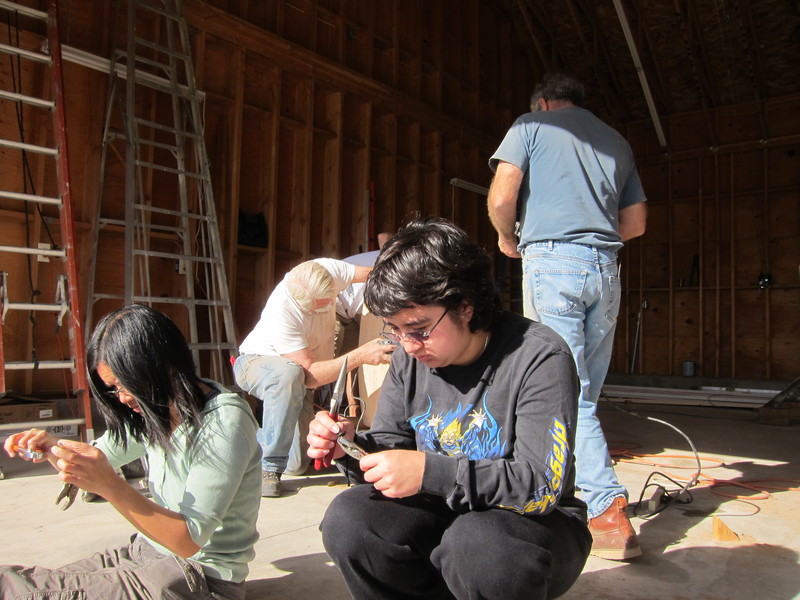 Nicci, Kelly, and Diane show the tedious process of straightening out the tacks once they are removed from the drum head. Prying them out of the drum sometimes causes them to bend out of shape. The tacks are expensive so we try not to waste them. Using plyers the head of the tack is held in place while the stem is straightened out. With a straight stem it makes it a lot easier to pound them back into the drum
Nicci, Kelly, and Diane show the tedious process of straightening out the tacks once they are removed from the drum head. Prying them out of the drum sometimes causes them to bend out of shape. The tacks are expensive so we try not to waste them. Using plyers the head of the tack is held in place while the stem is straightened out. With a straight stem it makes it a lot easier to pound them back into the drum
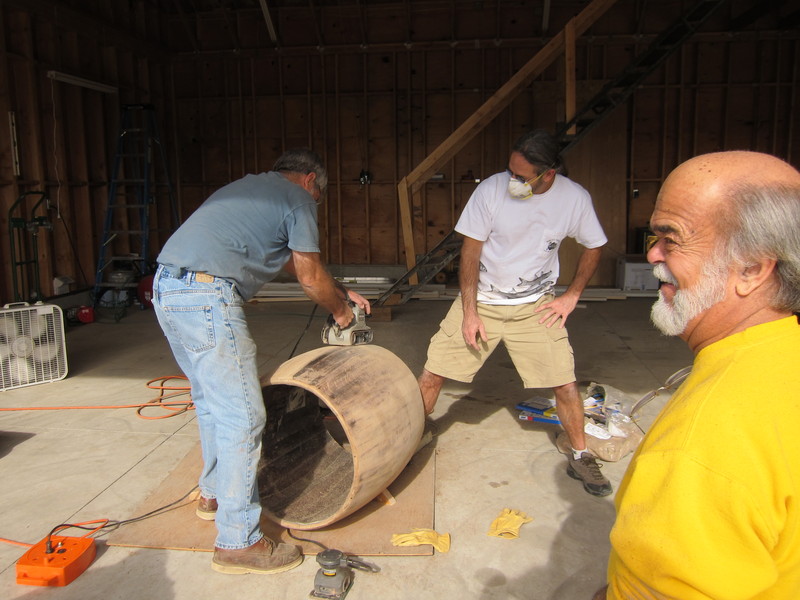 With both heads off, it is time to sand away the old stain. Marvin, Mike, and Ken show the process. We use a belt sander with 80 grit sandpaper to quickly strip off a majority of the stain. Then we use 100 grit, 120, 150, and 180 to make a perfectly smooth surface. It is very important to have one person using the belt sander, one person holding the drum and one person supervising.
With both heads off, it is time to sand away the old stain. Marvin, Mike, and Ken show the process. We use a belt sander with 80 grit sandpaper to quickly strip off a majority of the stain. Then we use 100 grit, 120, 150, and 180 to make a perfectly smooth surface. It is very important to have one person using the belt sander, one person holding the drum and one person supervising.
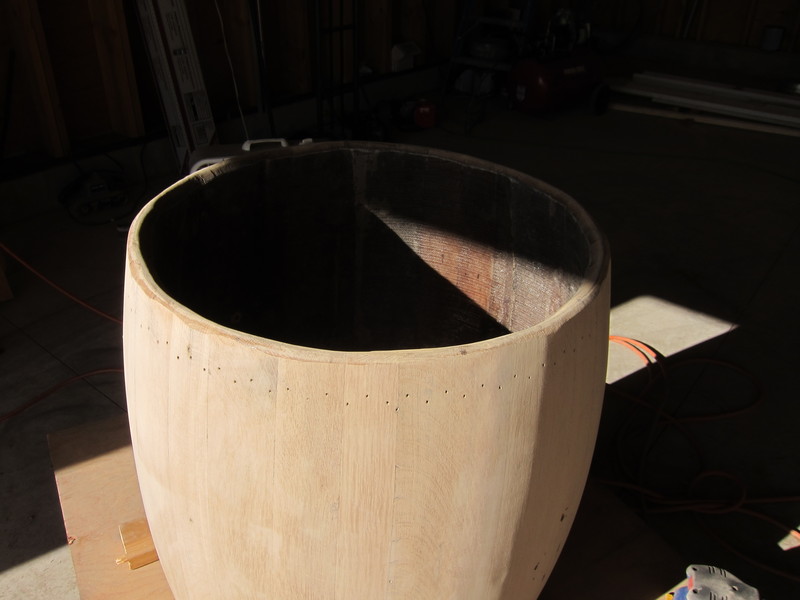
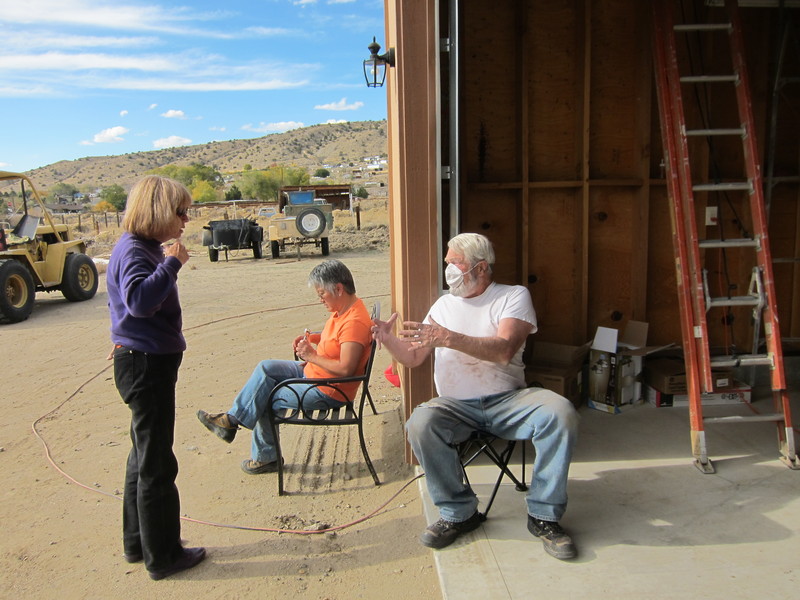 Nancy, Bob, and Marian relax as one day of work is complete. The drum's heads were removed, and the barrel was completely stripped and sanded. It is now time to stain the drum its new color.
Nancy, Bob, and Marian relax as one day of work is complete. The drum's heads were removed, and the barrel was completely stripped and sanded. It is now time to stain the drum its new color.
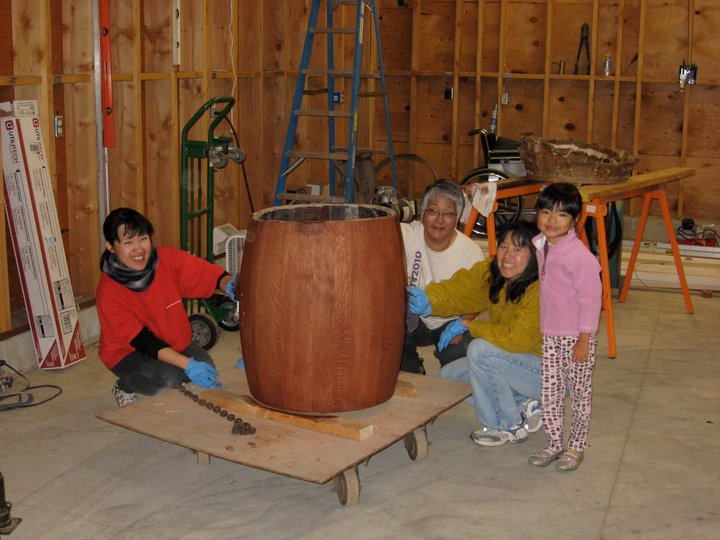 After staining all day, Yae, Nancy, Cindy, and Marissa show off the new color of the drum! All this drum needs now is some hides stretched across the top and the bottom and it will be ready to play!
After staining all day, Yae, Nancy, Cindy, and Marissa show off the new color of the drum! All this drum needs now is some hides stretched across the top and the bottom and it will be ready to play!
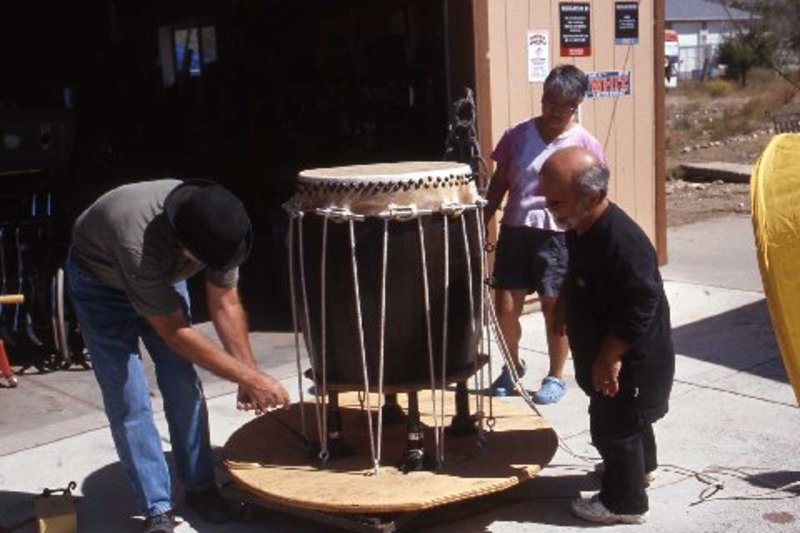 To put the heads back on, we lay the head on top of the drum and run a rope around the drum. The drum rests on a platform on top of hydraulic jacks. Once the rope is run around the entire drum the jacks will be extended to create the tension we need. Ken, Marvin, and Nancy make sure the drum is ready to be tensioned.
To put the heads back on, we lay the head on top of the drum and run a rope around the drum. The drum rests on a platform on top of hydraulic jacks. Once the rope is run around the entire drum the jacks will be extended to create the tension we need. Ken, Marvin, and Nancy make sure the drum is ready to be tensioned.
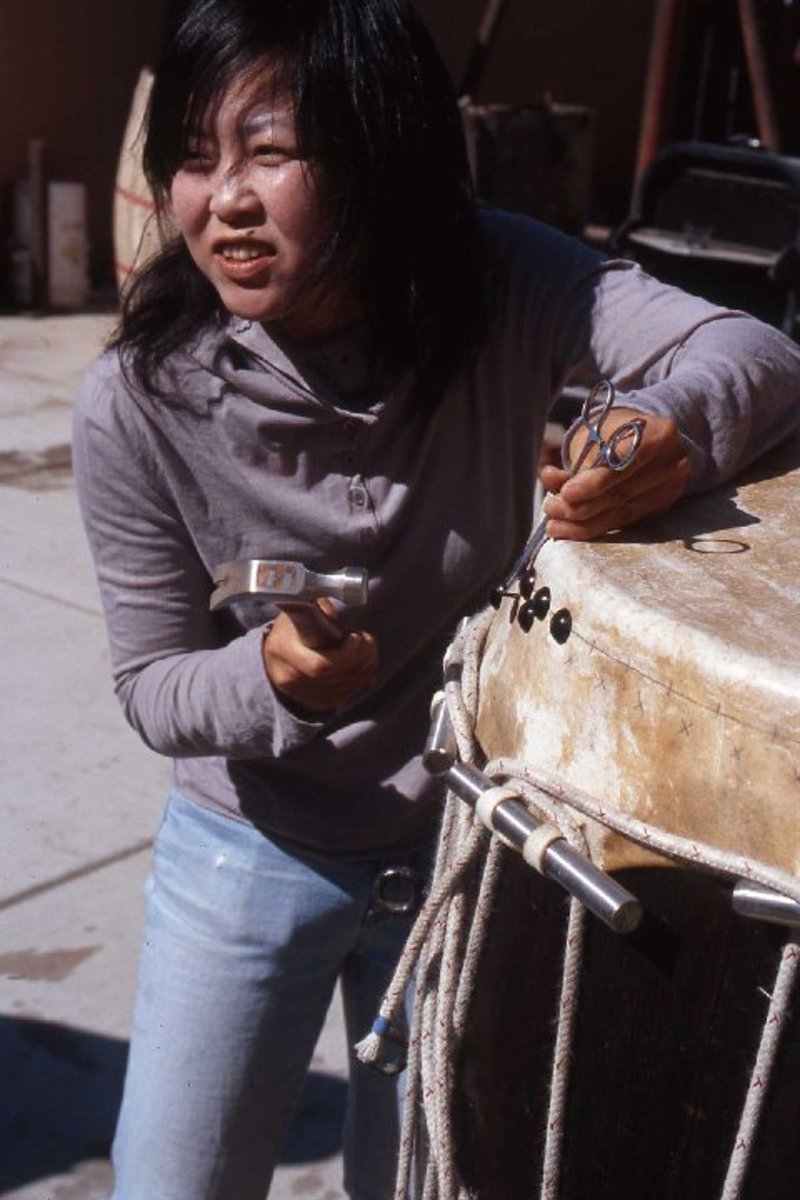 Once the tension is correct, the head is tacked into place. Keiko demonstrates how precise the tacks must be held while tapping them into place. Two rows of tacks go around each head of the drum. This ensures the head will not pop off or rattle while we are playing it.
Once the tension is correct, the head is tacked into place. Keiko demonstrates how precise the tacks must be held while tapping them into place. Two rows of tacks go around each head of the drum. This ensures the head will not pop off or rattle while we are playing it.
 After staining all day, Yae, Nancy, Cindy, and Marissa show off the new color of the drum! All this drum needs now is some hides stretched across the top and the bottom and it will be ready to play!
After staining all day, Yae, Nancy, Cindy, and Marissa show off the new color of the drum! All this drum needs now is some hides stretched across the top and the bottom and it will be ready to play!
 To put the heads back on, we lay the head on top of the drum and run a rope around the drum. The drum rests on a platform on top of hydraulic jacks. Once the rope is run around the entire drum the jacks will be extended to create the tension we need. Ken, Marvin, and Nancy make sure the drum is ready to be tensioned.
To put the heads back on, we lay the head on top of the drum and run a rope around the drum. The drum rests on a platform on top of hydraulic jacks. Once the rope is run around the entire drum the jacks will be extended to create the tension we need. Ken, Marvin, and Nancy make sure the drum is ready to be tensioned.
 Once the tension is correct, the head is tacked into place. Keiko demonstrates how precise the tacks must be held while tapping them into place. Two rows of tacks go around each head of the drum. This ensures the head will not pop off or rattle while we are playing it.
Once the tension is correct, the head is tacked into place. Keiko demonstrates how precise the tacks must be held while tapping them into place. Two rows of tacks go around each head of the drum. This ensures the head will not pop off or rattle while we are playing it.


